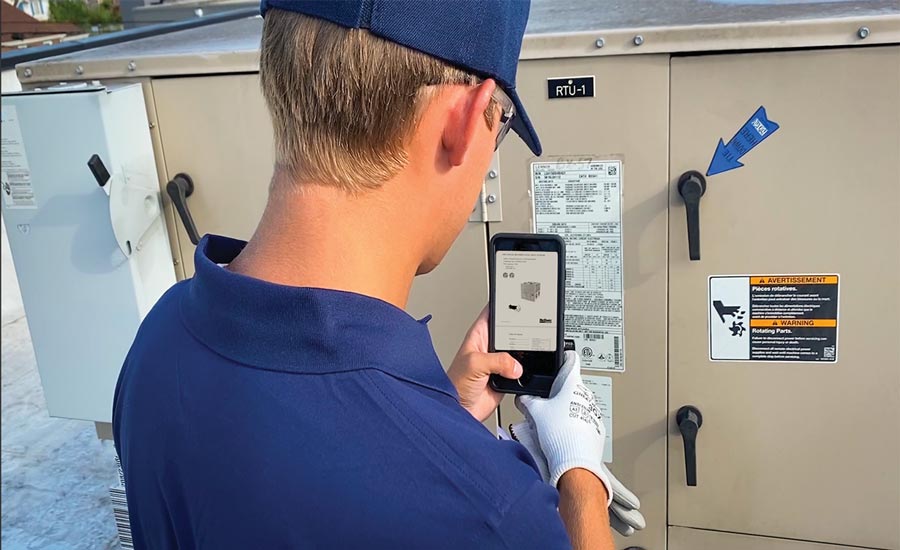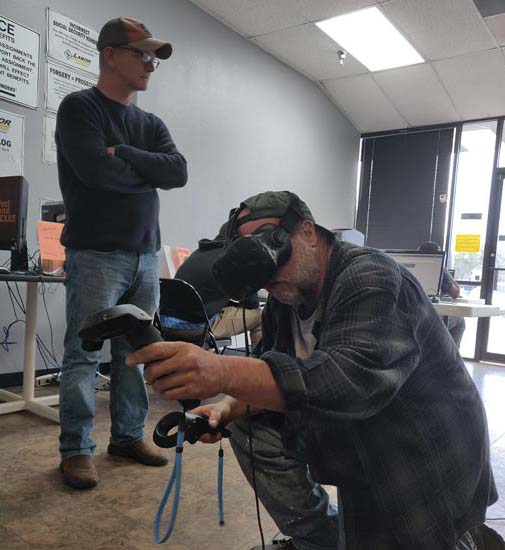As the HVAC industry charges into decade two of the 21st century, more and more software solutions exist for contractors, all meant to increase the speed and quality of job completions, make the industry attractive to the next generation, and ensure positive customer experiences.
The Right Software Means Customer Trust
Aaron Salow, CEO of XOi, explained that the right software can help a contractor gain customer trust, improve efficiency, and increase sales.
“Our industry has a reputation of getting customers’ distrust,” he said. “When customers hear about a broken heat exchanger, all they see is the $12,000 price tag. But by walking the customer through why the decision to replace the system was made, trust is gained and they understand the expense.”
He explained that software like XOi’s allows photos, videos, and custom notes to be added to all jobs, as well as the ability to bring customers to the job site virtually to provide the context for quotes and invoices. This helps the customer understand the reason for the service/replacement recommendations given to them.

THE RIGHT SOFTWARE: Aaron Salow, CEO of XOi, explained that the right software can help a contractor gain customer trust, improve efficiency, and increase sales.
Intelligent software also allows technicians to be equipped to solve the job the first time. XOi’s software contains a repository of manuals, wiring diagrams, videos, and more, and it allows service managers to send techs specific materials when they are in the field.
“Before this, if you had a really specific question about how to repair something, all you really had was YouTube, and the video may or may not be trustworthy,” he said. He explained that intelligent software can now include educational videos within the suite to ensure repairs are done correctly.
“All of this improves how many sales your technicians close,” he said. He explained that the newest software in the industry guides the technician from the moment they step into the truck at the beginning of the day until they step off of it at the end. It guides them in the jobsite through the sales process, helping them justify their estimates to customers and improving their sales and closing rates.
Salow explained that the future of intelligent software is data analytics. Current intelligent software is getting better and better at collecting data — like what processes lead to the highest closing rates — and the next generation of software will get better at using machine learning to draw insights from this data.
Documentation
For HVAC contractors, documentation is key to a seamless business experience, and software can help with this.
“There are a lot of reasons why contractors need to be documenting,” said Michael Gogan, product specialist at CompanyCam. “Maybe there’s pre-existing damage on the property that they need to take pictures of, make note of, so that they don’t get blamed for that damage.”
He also said that taking pictures/videos of the equipment can help log its service history or track property issues. Plus, taking pictures of serial/model numbers on equipment means that if a client calls after a few years with another need, the contractor has the equipment information on hand. The client does not need to go into their basement or outside and track down the number.
“Documenting can help contractors with covering their backsides, making sure that they’re staying out of disputes with property owners and clients,” said Gogan. “It can help to save time, make you more efficient on future callbacks, and eliminate some callbacks in general.”
Gogan explained that software like CompanyCam increases real-time transparency, both internally and externally. Technicians can snap photos on the jobsite, and then a project manager or business owner can view the photos and communicate with technicians remotely.
“And the same is true for communication with external stakeholders and clients,” Gogan said. Customers can view photos and data from the jobsite and make decisions without needing to physically visit.
Gogan said that software like CompanyCam stores photos to the cloud, allowing everyone with access to the company account to view pictures and any video comments uploaded to it in real-time.
Software and Education
Software for the HVAC industry is not reserved to solely running business operations; it has also reached into educating the next generation of laborers. The experience can make the industry more exciting for those considering a career in the skilled trades, offering a way to connect with them that is new to the 21st century.
Doug Donovan, CEO at Interplay, said that his company focuses on bringing experiential learning to the HVAC industry through 3-D simulations and virtual reality simulations.

VIRTUAL REALITY: Software for the HVAC industry has reached its way into educating the next generation of laborers.
“In virtual reality, when the training scenario puts you on a roof, looking at a rooftop unit with your multimeter in your hand, your body and your brain believes that’s what you’re doing,” Donovan said. “So it’s a really powerful tool for training.” He explained that the tool is built for contractors and intended to be foundational training that can run alongside a regimented training program that already exists at the company.
“The content is heavily focused on technicians that have been in the field for less than five years,” he said. “But at the same time, we also introduce and train on some newer technologies … that the more seasoned pros enjoy accessing and learning from.”
He described how learning through virtual reality is a lot like a video game — only instead of entertainment, a technician is learning how to troubleshoot a heat pump.
“3-D simulations allow you to really mimic the hands-on environment where they’re doing scenario-based learning, like troubleshooting a split residential a/c unit or a gas furnace,” he said. “There’s about a 90-second learning curve on how to navigate a 3-D simulation, but then you’re off and running.”
Donovan has seen companies implement this educational format, which also includes 2-D non-VR learning, into their foundational training and career laddering programs. Others have used it in conjunction with weekly meetings to encourage company-wide learning. He explained that a robust training software like Interplay’s allows contractors to hire for attitude and then train for aptitude.
“The biggest benefit by far is that it is effective learning that condenses and accelerates the learning time.”



Report Abusive Comment